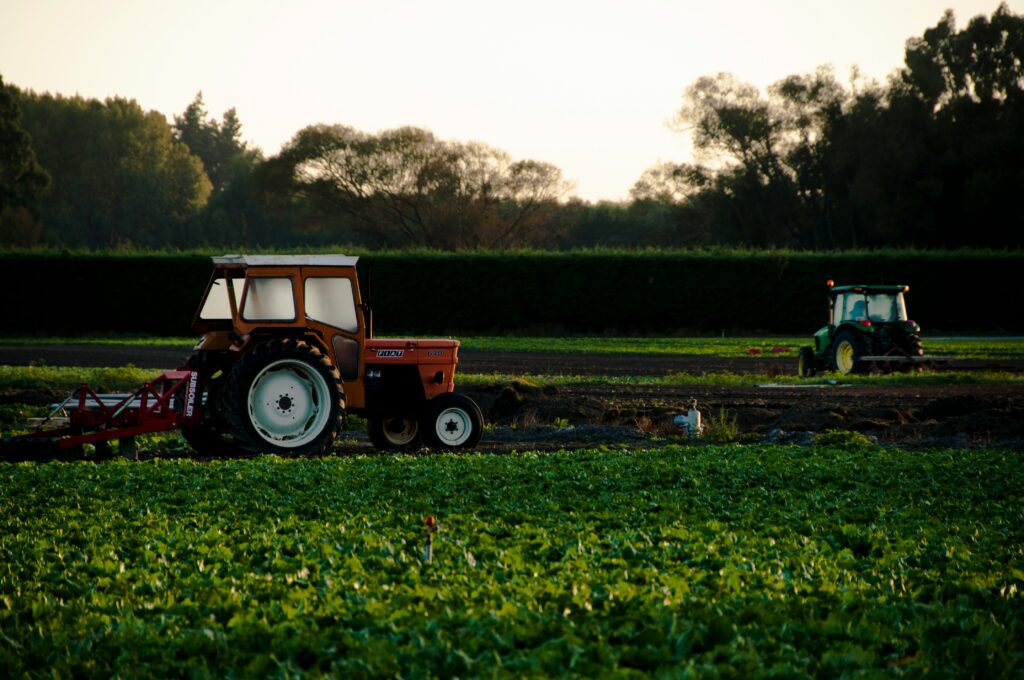The growing adoption of data-driven technologies is revolutionizing Italian agriculture, with an increasing focus on intelligence rather than mechanization.
The Italian AgriTech landscape: evolution and new directions
The Italian agricultural sector is undergoing a digital transformation that, despite recording a slight decline in overall investments over the past year, shows signs of greater maturity and awareness.
According to data from the Smart AgriFood Observatory 2025 by the Polytechnic University of Milan and the University of Brescia, the Agriculture 4.0 market in Italy experienced a contraction, dropping from €2.5 billion in 2023 to €2.3 billion in 2024, representing an 8% decrease.
However, this figure conceals a significant trend: while investments in hardware and machinery are decreasing, those in software and solutions for data management and analysis are growing. Italian agricultural companies are progressively shifting their attention from “machines” to “intelligence,” favoring Farm Management Information Systems, Decision Support Systems, and monitoring and mapping systems.
Data-driven technologies: the new frontier of agriculture
Analysis of enabling technologies reveals the strong prevalence of data-oriented solutions:
- Big data analytics represent 70% of implemented technologies
- General software solutions reach 50%
- IoT stands at 48%
Particularly relevant is the evolution of Artificial Intelligence, which in a short time has grown from an 11% share to 33% of adopted technologies. Startups in the sector also show a 22% increase in the use of AI and Machine Learning in their solutions. Artificial intelligence is mainly applied in field activity management, crop protection, and precise monitoring of production factors such as water, agrochemicals, and fertilizers. In supply chains, AI is used for monitoring sustainability objectives and quality control.
Digital adoption: a path still evolving
Despite progress, research shows that the diffusion of digital technologies in the Italian agricultural sector remains limited:
- Only 9.5% of agricultural land is cultivated using digital practices (a slight increase from 9% in 2023)
- 94% of innovation investments in 2024 were made by companies already using technology
- In a sample of 1,250 companies, only 12% have adopted at least one Agriculture 4.0 solution, and 11% have implemented four
A multidimensional model developed by the Observatory to map the level of digital maturity of agricultural businesses reveals that:
- 57% of companies are lagging in digital technology adoption (and 90% of these are completely stagnant)
- 35% are moving toward digitalization
- Only 8% can be considered mature from an innovation perspective
The gap is more pronounced in small companies, which show greater difficulties in undertaking digitalization paths.
Motivations behind technological investments
The research highlights an evolution in the motivations driving agricultural companies to invest in digital technologies. Beyond the traditional search for efficiency and resource savings, new expectations are emerging:
- Increase business resilience in the face of climate challenges
- Improve yields
- Explore, verify, and adopt new crops
- Measure and improve company performance
It is significant to note how concerns about climate change’s effects influence technological choices. Companies are increasingly focused on finding solutions that improve forecasting capabilities, business activity management, and planning.
What are the main obstacles that hinder the adoption of digital technologies in the Italian agricultural sector?
- Companies’ perception of being “too small” to tackle this type of investment
- Difficulty in clearly evaluating the real benefits of digital technology
- Lack of specific skills
- Lack of interoperability between different platforms and solutions
- Difficulties in calculating return on investment
A significant factor also concerns the role of incentives: 84% of companies that have chosen to adopt Agriculture 4.0 solutions have benefited from at least one incentive, highlighting how these instruments are fundamental for stimulating innovation in the sector.

The future of AgriTech in Italy: challenges and opportunities
To accelerate the adoption of digital technologies in the Italian agricultural sector, the Smart AgriFood Observatory 2025 identifies four key factors:
- Targeted incentives: continue to support investments in digital technologies, which have proven effective
- Training and awareness: strengthen training initiatives to develop necessary skills
- Adequate infrastructure: ensure broadband network coverage in rural areas
- Data interoperability: facilitate information exchange between different platforms and solutions
If these challenges are successfully addressed, data-driven technologies can significantly contribute to improving productivity, reducing environmental impact, and strengthening the competitiveness of Italian agricultural companies.
Conclusions: toward smarter agriculture
The evolution of AgriTech in Italy shows a sector in transition toward a more mature and aware model, where intelligent data management takes a central role compared to simple mechanization.
This change reflects the need for agricultural companies to respond to complex challenges such as climate change, market volatility, and growing demands for sustainability. For decision-makers in the sector, the message is clear: investing in data-driven solutions today is no longer an option but a strategic necessity to ensure the resilience and competitiveness of their companies in the medium to long term.
As emphasized by Filippo Renga, Co-Founder and International Activities Coordinator of the Digital Innovation Observatories, “what cannot be measured cannot be improved” and the strength of modern agriculture must also come from the ability to make data speak.
Author: Claudia Paniconi | Marketing Manager at DMBI Consultants srl
Photo by Dan Meyers on Unsplash




